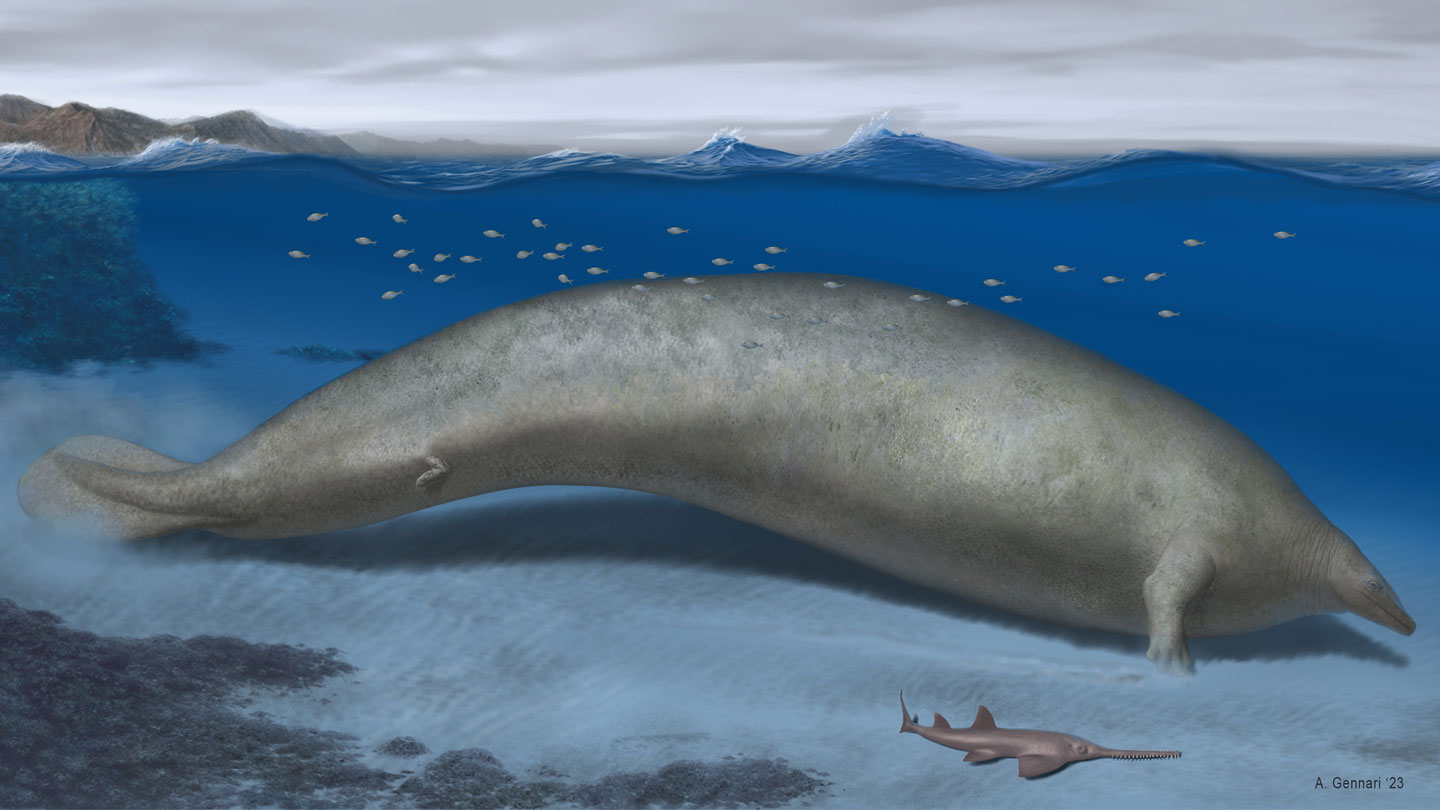Move over, blue whales. There could be a new heavyweight champ in town.
The roughly 39-million-year-old behemoth, Perucetus colossus, is a type of cetacean, a group that includes modern whales, dolphins and porpoises. And its bones were massive. P. colossus’ skeleton alone could have weighed about 5 to 7 metric tons, two to three times as much as a 25-meter-long blue whale’s skeleton does, the researchers estimate.
The fossils, which were found in southern Peru, were “clearly something exceptional from the first look,” says Eli Amson, a paleontologist at the State Museum of Natural History in Stuttgart, Germany. “You don’t move a vertebra like this by yourself.” Thirteen vertebrae were unearthed in total, each weighing over 100 kilograms, or more than a baby elephant.
Such heavy bones are consistent with a coastal, shallow-diving lifestyle, Amson and colleagues say. For deep dives, whales need a lighter skeleton so they can come back up for air without working too hard. The massive bones of P. colossus could have helped it hover at shallow depths by balancing the upward buoyant force from the air in its lungs.
2023-08-02 10:00:00
Original from www.sciencenews.org




















